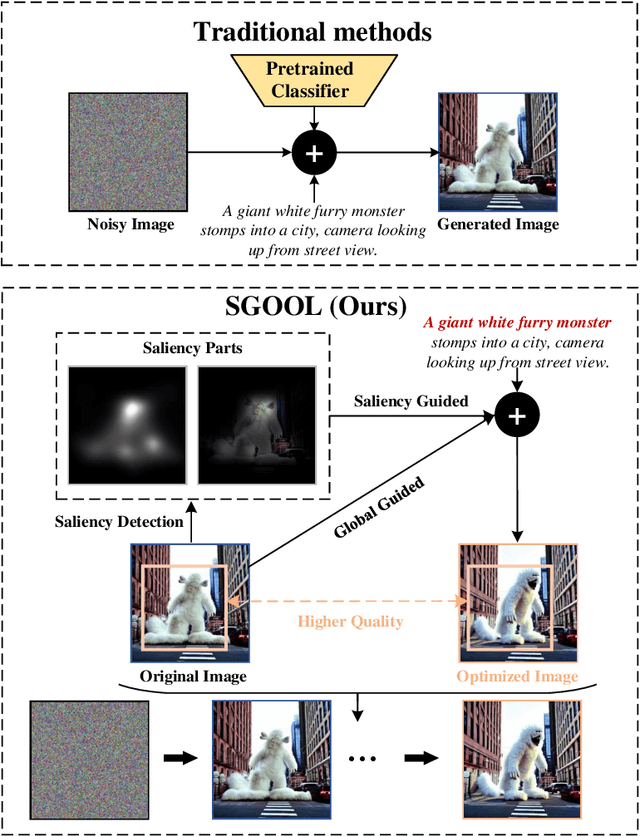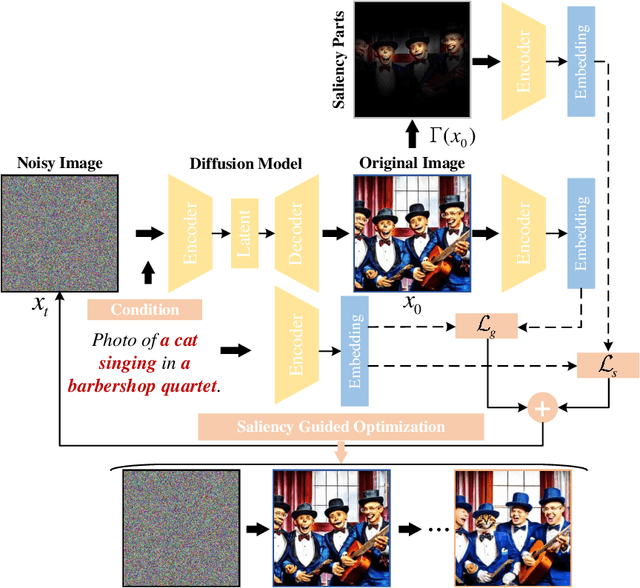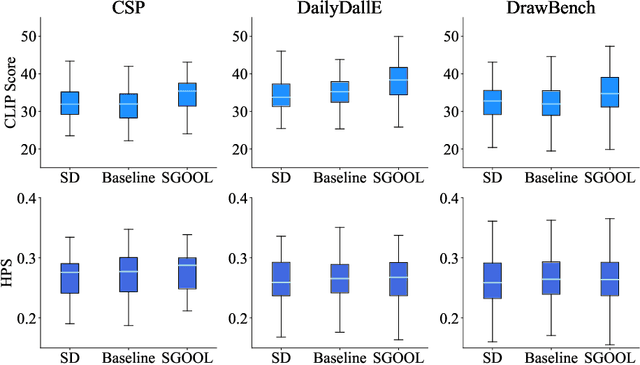Jizhe Zhou
Synthesizing Sheet Music Problems for Evaluation and Reinforcement Learning
Sep 04, 2025Abstract:Enhancing the ability of Large Language Models (LLMs) and Multimodal Large Language Models (MLLMs) to interpret sheet music is a crucial step toward building AI musicians. However, current research lacks both evaluation benchmarks and training data for sheet music reasoning. To address this, we propose the idea of synthesizing sheet music problems grounded in music theory, which can serve both as evaluation benchmarks and as training data for reinforcement learning with verifiable rewards (RLVR). We introduce a data synthesis framework that generates verifiable sheet music questions in both textual and visual modalities, leading to the Synthetic Sheet Music Reasoning Benchmark (SSMR-Bench) and a complementary training set. Evaluation results on SSMR-Bench show the importance of models' reasoning abilities in interpreting sheet music. At the same time, the poor performance of Gemini 2.5-Pro highlights the challenges that MLLMs still face in interpreting sheet music in a visual format. By leveraging synthetic data for RLVR, Qwen3-8B-Base and Qwen2.5-VL-Instruct achieve improvements on the SSMR-Bench. Besides, the trained Qwen3-8B-Base surpasses GPT-4 in overall performance on MusicTheoryBench and achieves reasoning performance comparable to GPT-4 with the strategies of Role play and Chain-of-Thought. Notably, its performance on math problems also improves relative to the original Qwen3-8B-Base. Furthermore, our results show that the enhanced reasoning ability can also facilitate music composition. In conclusion, we are the first to propose the idea of synthesizing sheet music problems based on music theory rules, and demonstrate its effectiveness not only in advancing model reasoning for sheet music understanding but also in unlocking new possibilities for AI-assisted music creation.
Unsourced Adversarial CAPTCHA: A Bi-Phase Adversarial CAPTCHA Framework
Jun 12, 2025Abstract:With the rapid advancements in deep learning, traditional CAPTCHA schemes are increasingly vulnerable to automated attacks powered by deep neural networks (DNNs). Existing adversarial attack methods often rely on original image characteristics, resulting in distortions that hinder human interpretation and limit applicability in scenarios lacking initial input images. To address these challenges, we propose the Unsourced Adversarial CAPTCHA (UAC), a novel framework generating high-fidelity adversarial examples guided by attacker-specified text prompts. Leveraging a Large Language Model (LLM), UAC enhances CAPTCHA diversity and supports both targeted and untargeted attacks. For targeted attacks, the EDICT method optimizes dual latent variables in a diffusion model for superior image quality. In untargeted attacks, especially for black-box scenarios, we introduce bi-path unsourced adversarial CAPTCHA (BP-UAC), a two-step optimization strategy employing multimodal gradients and bi-path optimization for efficient misclassification. Experiments show BP-UAC achieves high attack success rates across diverse systems, generating natural CAPTCHAs indistinguishable to humans and DNNs.
ForensicHub: A Unified Benchmark & Codebase for All-Domain Fake Image Detection and Localization
May 16, 2025Abstract:The field of Fake Image Detection and Localization (FIDL) is highly fragmented, encompassing four domains: deepfake detection (Deepfake), image manipulation detection and localization (IMDL), artificial intelligence-generated image detection (AIGC), and document image manipulation localization (Doc). Although individual benchmarks exist in some domains, a unified benchmark for all domains in FIDL remains blank. The absence of a unified benchmark results in significant domain silos, where each domain independently constructs its datasets, models, and evaluation protocols without interoperability, preventing cross-domain comparisons and hindering the development of the entire FIDL field. To close the domain silo barrier, we propose ForensicHub, the first unified benchmark & codebase for all-domain fake image detection and localization. Considering drastic variations on dataset, model, and evaluation configurations across all domains, as well as the scarcity of open-sourced baseline models and the lack of individual benchmarks in some domains, ForensicHub: i) proposes a modular and configuration-driven architecture that decomposes forensic pipelines into interchangeable components across datasets, transforms, models, and evaluators, allowing flexible composition across all domains; ii) fully implements 10 baseline models, 6 backbones, 2 new benchmarks for AIGC and Doc, and integrates 2 existing benchmarks of DeepfakeBench and IMDLBenCo through an adapter-based design; iii) conducts indepth analysis based on the ForensicHub, offering 8 key actionable insights into FIDL model architecture, dataset characteristics, and evaluation standards. ForensicHub represents a significant leap forward in breaking the domain silos in the FIDL field and inspiring future breakthroughs.
DP-TRAE: A Dual-Phase Merging Transferable Reversible Adversarial Example for Image Privacy Protection
May 11, 2025Abstract:In the field of digital security, Reversible Adversarial Examples (RAE) combine adversarial attacks with reversible data hiding techniques to effectively protect sensitive data and prevent unauthorized analysis by malicious Deep Neural Networks (DNNs). However, existing RAE techniques primarily focus on white-box attacks, lacking a comprehensive evaluation of their effectiveness in black-box scenarios. This limitation impedes their broader deployment in complex, dynamic environments. Further more, traditional black-box attacks are often characterized by poor transferability and high query costs, significantly limiting their practical applicability. To address these challenges, we propose the Dual-Phase Merging Transferable Reversible Attack method, which generates highly transferable initial adversarial perturbations in a white-box model and employs a memory augmented black-box strategy to effectively mislead target mod els. Experimental results demonstrate the superiority of our approach, achieving a 99.0% attack success rate and 100% recovery rate in black-box scenarios, highlighting its robustness in privacy protection. Moreover, we successfully implemented a black-box attack on a commercial model, further substantiating the potential of this approach for practical use.
EBAD-Gaussian: Event-driven Bundle Adjusted Deblur Gaussian Splatting
Apr 14, 2025Abstract:While 3D Gaussian Splatting (3D-GS) achieves photorealistic novel view synthesis, its performance degrades with motion blur. In scenarios with rapid motion or low-light conditions, existing RGB-based deblurring methods struggle to model camera pose and radiance changes during exposure, reducing reconstruction accuracy. Event cameras, capturing continuous brightness changes during exposure, can effectively assist in modeling motion blur and improving reconstruction quality. Therefore, we propose Event-driven Bundle Adjusted Deblur Gaussian Splatting (EBAD-Gaussian), which reconstructs sharp 3D Gaussians from event streams and severely blurred images. This method jointly learns the parameters of these Gaussians while recovering camera motion trajectories during exposure time. Specifically, we first construct a blur loss function by synthesizing multiple latent sharp images during the exposure time, minimizing the difference between real and synthesized blurred images. Then we use event stream to supervise the light intensity changes between latent sharp images at any time within the exposure period, supplementing the light intensity dynamic changes lost in RGB images. Furthermore, we optimize the latent sharp images at intermediate exposure times based on the event-based double integral (EDI) prior, applying consistency constraints to enhance the details and texture information of the reconstructed images. Extensive experiments on synthetic and real-world datasets show that EBAD-Gaussian can achieve high-quality 3D scene reconstruction under the condition of blurred images and event stream inputs.
Style Quantization for Data-Efficient GAN Training
Mar 31, 2025Abstract:Under limited data setting, GANs often struggle to navigate and effectively exploit the input latent space. Consequently, images generated from adjacent variables in a sparse input latent space may exhibit significant discrepancies in realism, leading to suboptimal consistency regularization (CR) outcomes. To address this, we propose \textit{SQ-GAN}, a novel approach that enhances CR by introducing a style space quantization scheme. This method transforms the sparse, continuous input latent space into a compact, structured discrete proxy space, allowing each element to correspond to a specific real data point, thereby improving CR performance. Instead of direct quantization, we first map the input latent variables into a less entangled ``style'' space and apply quantization using a learnable codebook. This enables each quantized code to control distinct factors of variation. Additionally, we optimize the optimal transport distance to align the codebook codes with features extracted from the training data by a foundation model, embedding external knowledge into the codebook and establishing a semantically rich vocabulary that properly describes the training dataset. Extensive experiments demonstrate significant improvements in both discriminator robustness and generation quality with our method.
Mesoscopic Insights: Orchestrating Multi-scale & Hybrid Architecture for Image Manipulation Localization
Dec 18, 2024



Abstract:The mesoscopic level serves as a bridge between the macroscopic and microscopic worlds, addressing gaps overlooked by both. Image manipulation localization (IML), a crucial technique to pursue truth from fake images, has long relied on low-level (microscopic-level) traces. However, in practice, most tampering aims to deceive the audience by altering image semantics. As a result, manipulation commonly occurs at the object level (macroscopic level), which is equally important as microscopic traces. Therefore, integrating these two levels into the mesoscopic level presents a new perspective for IML research. Inspired by this, our paper explores how to simultaneously construct mesoscopic representations of micro and macro information for IML and introduces the Mesorch architecture to orchestrate both. Specifically, this architecture i) combines Transformers and CNNs in parallel, with Transformers extracting macro information and CNNs capturing micro details, and ii) explores across different scales, assessing micro and macro information seamlessly. Additionally, based on the Mesorch architecture, the paper introduces two baseline models aimed at solving IML tasks through mesoscopic representation. Extensive experiments across four datasets have demonstrated that our models surpass the current state-of-the-art in terms of performance, computational complexity, and robustness.
Saliency Guided Optimization of Diffusion Latents
Oct 14, 2024



Abstract:With the rapid advances in diffusion models, generating decent images from text prompts is no longer challenging. The key to text-to-image generation is how to optimize the results of a text-to-image generation model so that they can be better aligned with human intentions or prompts. Existing optimization methods commonly treat the entire image uniformly and conduct global optimization. These methods overlook the fact that when viewing an image, the human visual system naturally prioritizes attention toward salient areas, often neglecting less or non-salient regions. That is, humans are likely to neglect optimizations in non-salient areas. Consequently, although model retaining is conducted under the guidance of additional large and multimodality models, existing methods, which perform uniform optimizations, yield sub-optimal results. To address this alignment challenge effectively and efficiently, we propose Saliency Guided Optimization Of Diffusion Latents (SGOOL). We first employ a saliency detector to mimic the human visual attention system and mark out the salient regions. To avoid retraining an additional model, our method directly optimizes the diffusion latents. Besides, SGOOL utilizes an invertible diffusion process and endows it with the merits of constant memory implementation. Hence, our method becomes a parameter-efficient and plug-and-play fine-tuning method. Extensive experiments have been done with several metrics and human evaluation. Experimental results demonstrate the superiority of SGOOL in image quality and prompt alignment.
FIF-UNet: An Efficient UNet Using Feature Interaction and Fusion for Medical Image Segmentation
Sep 09, 2024



Abstract:Nowadays, pre-trained encoders are widely used in medical image segmentation because of their ability to capture complex feature representations. However, the existing models fail to effectively utilize the rich features obtained by the pre-trained encoder, resulting in suboptimal segmentation results. In this work, a novel U-shaped model, called FIF-UNet, is proposed to address the above issue, including three plug-and-play modules. A channel spatial interaction module (CSI) is proposed to obtain informative features by establishing the interaction between encoder stages and corresponding decoder stages. A cascaded conv-SE module (CoSE) is designed to enhance the representation of critical features by adaptively assigning importance weights on different feature channels. A multi-level fusion module (MLF) is proposed to fuse the multi-scale features from the decoder stages, ensuring accurate and robust final segmentation. Comprehensive experiments on the Synapse and ACDC datasets demonstrate that the proposed FIF-UNet outperforms existing state-of-the-art methods, which achieves the highest average DICE of 86.05% and 92.58%, respectively.
M^3:Manipulation Mask Manufacturer for Arbitrary-Scale Super-Resolution Mask
Jul 04, 2024Abstract:In the field of image manipulation localization (IML), the small quantity and poor quality of existing datasets have always been major issues. A dataset containing various types of manipulations will greatly help improve the accuracy of IML models. Images on the internet (such as those on Baidu Tieba's PS Bar) are manipulated using various techniques, and creating a dataset from these images will significantly enrich the types of manipulations in our data. However, images on the internet suffer from resolution and clarity issues, and the masks obtained by simply subtracting the manipulated image from the original contain various noises. These noises are difficult to remove, rendering the masks unusable for IML models. Inspired by the field of change detection, we treat the original and manipulated images as changes over time for the same image and view the data generation task as a change detection task. However, due to clarity issues between images, conventional change detection models perform poorly. Therefore, we introduced a super-resolution module and proposed the Manipulation Mask Manufacturer (MMM) framework. It enhances the resolution of both the original and tampered images, thereby improving image details for better comparison. Simultaneously, the framework converts the original and tampered images into feature embeddings and concatenates them, effectively modeling the context. Additionally, we created the Manipulation Mask Manufacturer Dataset (MMMD), a dataset that covers a wide range of manipulation techniques. We aim to contribute to the fields of image forensics and manipulation detection by providing more realistic manipulation data through MMM and MMMD. Detailed information about MMMD and the download link can be found at: the code and datasets will be made available.
 Add to Chrome
Add to Chrome Add to Firefox
Add to Firefox Add to Edge
Add to Edge